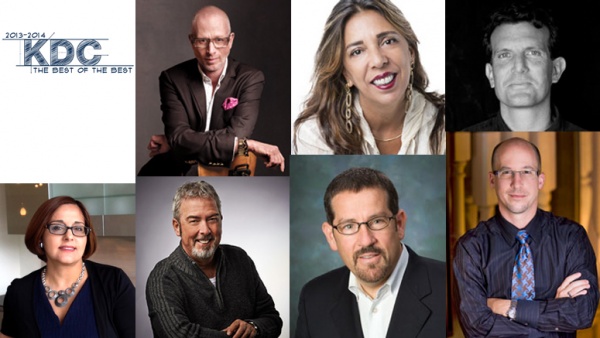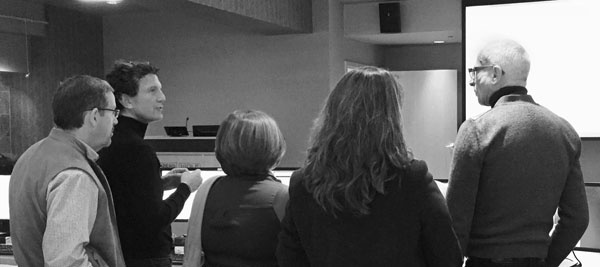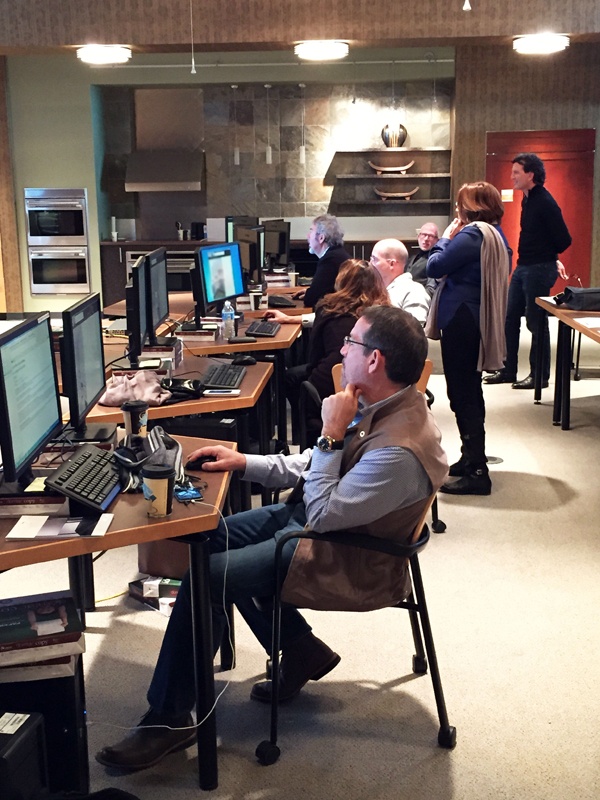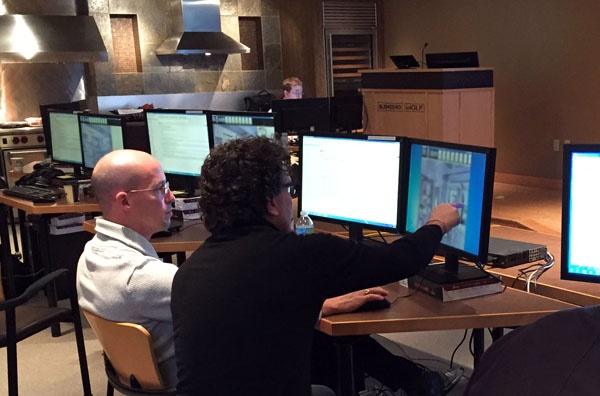One of the projects that I have been associated with for the last year is the Sub-Zero and Wolf Kitchen Design Contest. Held every other year, it attracts incredibly talented judges and participants, and as far as contests go, it is one of the handful where I greatly anticipate the outcome.
Since a large percentage of the projects I work on are residential, I feel particularly qualified to tell you that there isn’t much debate that the kitchen is the most important room in the house. It’s typically the hub of all family activity. If you needed further evidence, we all know that if you have a party … everyone ends up in the kitchen. It’s a space that no longer has a singular specific purpose like a bathroom, but if you’re having a party and everyone ends up in the bathroom, I’d say it was either a bad party or 1974.

The Sub-Zero and Wolf Kitchen Design Contest is now in its 11th run and has terrific participation from around the world. Since I love me some stats, here are some notable ones for you:
- 1,784 Total Entries
- Participation from 16 Different Countries
- 48 out of 52 US States Represented
- 57 Student Entries
- 661 Entries from First Time Participants

Back in early March, a panel made up of notable architects, designers, and industry leaders all met in Madison, Wisconsin (National headquarters for Sub-Zero and Wolf) for a few days to evaluate this year’s kitchen entries. The panel of judges consisted of:
Jamie Drake – Founder of the multi-discipline firm Drake Design Associates, member of the Interior Design Hall of Fame and was inducted into the ASID College of Fellows in 2011.
Cristina Menezes – Architect practicing in Brazil and Lebanon, 2014 Architizer A+ Award winner, previous Sub-Zero and Wolf Design Contest People’s Choice Award Winner.
E.J. Meade – One of the founding partners of Arch11, recipient of the Alpha Ro Chi Medal for Design Excellence, Emerging Impressions Award from the AIA, 24 AIA awards in the past five years, including firm of the year 2009 from the Colorado AIA north.
Matthew Quinn – Principal in Atlanta-based Retrofit Ventures and Design Galleria Kitchen & Bath Studio, recipient of numerous national design awards, including first place in the Sub-Zero and Wolf Kitchen Design Contest and has been published in numerous magazines and books including Architectural Digest and Veranda.
Doug Durbin – Co-founder of nuHaus – a fine architectural millwork and cabinetry company, and an eight time Sub-Zero and Wolf KDC winner.
Friedemann Weinhardt – Owner and principal designer at Design First Interiors (based in Ottawa, Ontario), a seven time regional winner and 2013 second place global Sub-Zero and Wolf KDC winner.
Vasi Ypsilantis – Graduate of the Fashion Institute of Technology in New York City, owner of her own boutique kitchen and bath showroom, The Breakfast Room, Ltd., and previously received first place for best traditional kitchen design in the national Sub-Zero and Wolf Kitchen Design Contest.
This is an impressive list of judges that were set with the task of reviewing almost 1,800 entries. Let that sink in for a minute … 1,800 entries! I have participated in my fair share of juries before and I know how long a process this takes. From these 1,800, the judges selected 53 of the best kitchen designs submitted from around the world. These are the ‘Regional Winners’, and later this year, there will be a final round of judging to determine the ‘Best of the Best’, chosen from the 53 regional winners. There will also be a ‘Designer’s Choice’ winner, as well as a Student winner, and a First Time Entry winner – all of which will be announced at a 3-day Summit taking place in September.

Since I have been involved and sharing this process with you, I have had the luxury of asking for certain pieces of information along the way. I have some questions that were prepared and asked of the judges to help show what goes in to a contest like this and what makes it so special.
What makes a kitchen design stand out in your mind?
I love to be able to see the person, the owner, working in that kitchen. So if there is a personality to it, that is what makes it stand out. I don’t even know who the person is but just from the aesthetics of the space I can picture what that person is like.
One thing that is difficult [about judging the entries] is that this is a kitchen design contest, and it’s very difficult to separate the architecture from the kitchen design…you have to zoom in and only pay attention to the kitchen. There is a fine line—we have to keep reminding ourselves that it’s a kitchen design contest and as much as you love the architecture, [you] have to look at what the kitchen is.
~ Matthew Quinn
.
It’s innovation. Really thinking through the program. Not necessarily innovation through materials or shape, but through programming the kitchen—how does it work, how does it address the needs of a changing American family and what that might be, or a global family for that matter. Whether that becomes adjacencies of eating areas to thinking areas, or cooking areas to refrigeration, I look for some level of innovation.
~EJ Meade

Have you seen anything surprising in this year’s entries?
Two years ago it was white kitchen, white kitchen, white kitchen—which is always what you see when the economy is not as robust—people get safe with color. We’re seeing more color, seeing more wood, and very expressive wood burling and book matching, really interesting wood mixed with stainless steel… Color. With the way the economy is, in this contest two years from now we’re going to see even more color. Grey and white are still the most dominant….
~ Matthew Quinn
.
I am so surprised because, while I prefer contemporary design, I saw a lot of transitional and traditional work that I also liked and [that was] well done…. It’s easy to appreciate a design that is well done, regardless of style.
~Cristina Menezes
.
Can you explain some basic guidelines on how you are evaluating the entries?
I’m always looking to see if it functions, if it works. So, we have a bias. If a fridge door opens the wrong way, you have to move on. I like cooking and if I can’t imagine myself having a nice time in that kitchen cooking, then I pay less attention to how great it looks. Function is first.
~ Friedemann Weinhardt
.
I think it’s best when the kitchen responds to the architecture. When we have something that’s not picking up the proportions of the space, or windows, of the tectonics—the way the architecture is made and respecting that, then that gets points off from me.
~ EJ Meade
.
What I did to analyze the projects was to analyze the concepts—if it is well done, it is correct, and the result of the concept is complete. The first point I analyze is the plan to see the function. Then I look at the photos to see the concept. And then I make notes first for the plan, function, correct use of appliances, and then of the concept with the pictures, and then, the project overall.
~ Cristina Menezes

What is your favorite part of the preliminary round of judging?
What I love so much about the preliminary round of judging is that we get to see so many kitchens. It’s nearly 1,800 kitchens from all over the world, and it’s very inspiring. You’ve got nearly 1,800 different designers and their interpretations of what this kitchen should be, or the way they like to make kitchens, and I think it’s fascinating to get into the minds of all of these different designers.
~ Matthew Quinn
.
The conversation, absolutely. We all start digging in and grinding through [the] entries and you’re kind of in your own world, but when we can then bring our results to a conversation and it starts becoming a debate between people, people certainly find their favorites.
As an architect, my eyes are opened a lot by all the designers in the group. Why certain things are the way they are, and then I hope that I can offer the same to them. The conversation and the debate is really in some ways what keeps me coming back—it’s exciting.
~EJ Meade
.
It takes a considerable amount of dedication and focus to judge a contest such as this one – the largest one I’ve been through only included about 300 entries and it seemingly took forever! The good news is that for the vast majority of us, we get to see all the winners, catch up on emerging trends, and get exposed to new products and technologies without having to go through the process ourselves.
Cheers,

